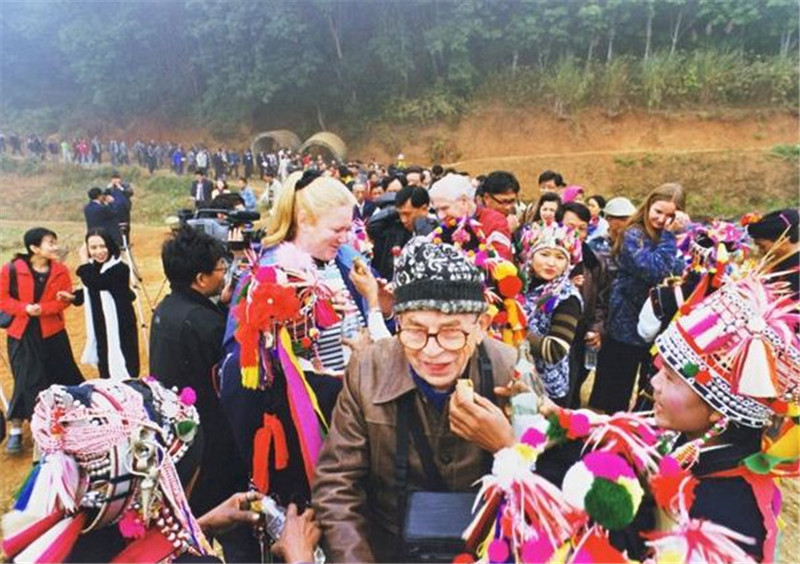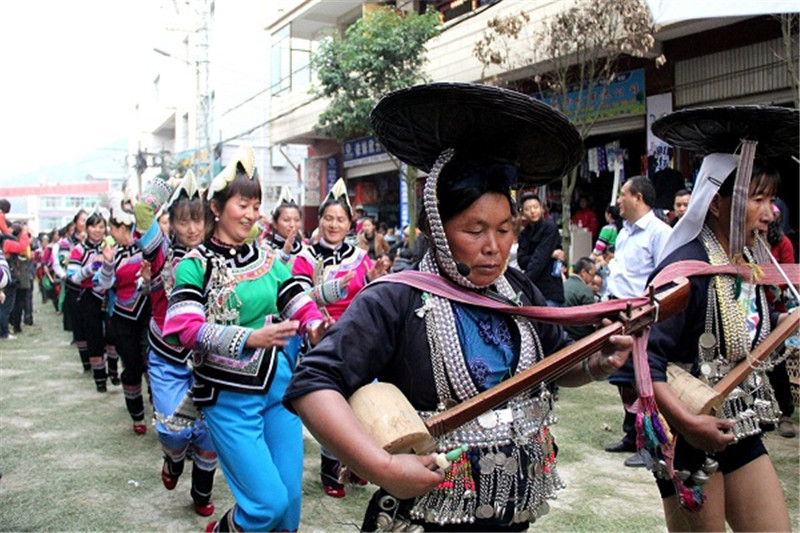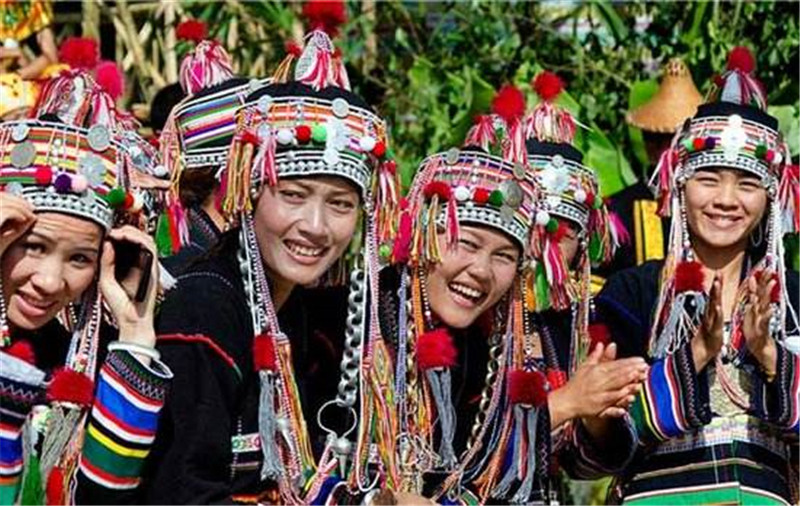
Zhalete Festival of Hani Ethnic Minority
Basic Introduction
- Chinese Name: 哈尼族扎勒特/十月年/米索扎
- English Name: Zhalete Festival of Hani Ethnic Minority
Zalet Festival is a grand traditional festival of the Hani ethnic group. “Zalet” is a transliteration from the Hani language, also known as “Dianian,” which means “Big Year.” It takes place in the tenth month of the lunar calendar, hence it is also referred to as “Yila He Shi,” or “October Year.” The festival begins on the first Dragon Day of the tenth lunar month and concludes on the day of the Monkey in the lunar calendar, lasting for five days.
The Hani people practice a form of primitive religion, and the Zalet Festival primarily involves rituals to honor the heavenly gods and ancestors. The celebrations kick off on the first Dragon Day of the lunar month and can last from five to six days, often extending to half a month.
During the festival, pigs and sheep are slaughtered, rice cakes are steamed, and glutinous rice is prepared as offerings to heaven and ancestors. Neighboring villages and guests from other ethnic groups are invited to share in the celebrations. People dress in their finest attire, visit relatives, seek marriage, and brides return to their parental homes with wine, meat, and rice cakes to present to their ancestors as New Year’s greetings.
Daytime activities include swinging, wrestling, spinning tops, singing, and dancing—various entertainment options. At night, bonfires are lit in the village’s grassy areas, and families bring tables filled with food, including meat, rice cakes, and fruits, to share meals with one another, creating an atmosphere filled with friendship and joy.
“New Year’s Zalet”
The Hani people’s biggest festival is the “October Year,” which lasts for six days. According to their ancient calendar, the new year begins on the first Dragon Day of the lunar month of October (equivalent to the first day of the Lunar New Year for the Han Chinese). On New Year’s Day, each village is required to collectively slaughter a pig. Regardless of its size, the meat is distributed evenly among households, ensuring that even limited quantities of organs like heart, liver, lungs, intestines, and stomach are shared among every family.
In the afternoon, families use the pork and offal they receive to make offerings to their ancestors. During the festival, families reunite and invite friends from nearby ethnic groups to join in the celebrations. The atmosphere is filled with continuous laughter and joy, and they especially enjoy singing ancient folk songs that narrate the origins of the festival and the history of their people, celebrating the happiness of a bountiful harvest.

Festival Activities
- On the day of the festival, each family must slaughter a red-feathered rooster in their courtyard and cook it on the spot as an offering to the heavens. All family members are required to eat a piece of the chicken, except for married daughters, who cannot partake.
- Throughout the festival, families are expected to place some food and drinks at the roadside to honor their ancestors.
- Families also prepare rice balls and some cooked meat to present to the eldest elder of their clan, symbolizing their remembrance of their relatives and kin.
- Starting from the third day of the festival, villagers gather in the afternoon outside the home of the priest with their own food and drinks. The priest leads a ceremony that includes traditional singing and dancing. After the rituals, families set their food and drinks in the center of the village for a communal feast, known as the “Central Square Banquet,” where everyone drinks, shares blessings, and enjoys entertainment together.


 7 Days GolfingTour
7 Days GolfingTour
 8 Days Group Tour
8 Days Group Tour
 8 Days Yunnan Tour
8 Days Yunnan Tour
 7 Days Shangri La Hiking
7 Days Shangri La Hiking
 11 Days Yunnan Tour
11 Days Yunnan Tour
 6 Days Yuanyang Terraces
6 Days Yuanyang Terraces
 11 Days Yunnan Tour
11 Days Yunnan Tour
 8 Days South Yunnan
8 Days South Yunnan
 7 Days Tea Tour
7 Days Tea Tour
 8 Days Muslim Tour
8 Days Muslim Tour
 12 Days Self-Driving
12 Days Self-Driving
 4 Days Haba Climbing
4 Days Haba Climbing
 Tiger Leaping Gorge
Tiger Leaping Gorge
 Stone Forest
Stone Forest
 Yunnan-Tibet
Yunnan-Tibet
 Hani Rice Terraces
Hani Rice Terraces
 Kunming
Kunming
 Lijiang
Lijiang
 Shangri-la
Shangri-la
 Dali
Dali
 XishuangBanna
XishuangBanna
 Honghe
Honghe
 Kunming
Kunming
 Lijiang
Lijiang
 Shangri-la
Shangri-la
 Yuanyang Rice Terraces
Yuanyang Rice Terraces
 Nujiang
Nujiang
 XishuangBanna
XishuangBanna
 Spring City Golf
Spring City Golf
 Snow Mountain Golf
Snow Mountain Golf
 Stone Mountain Golf
Stone Mountain Golf

















